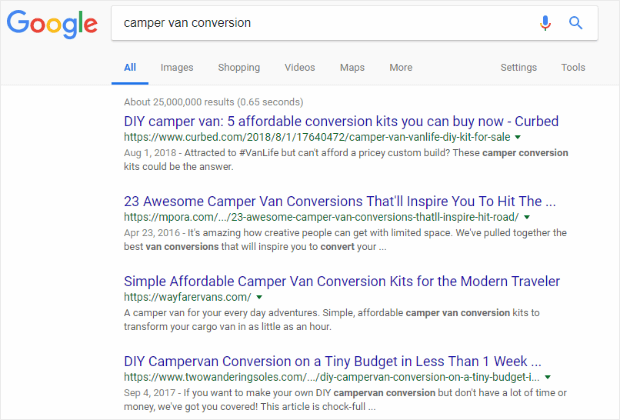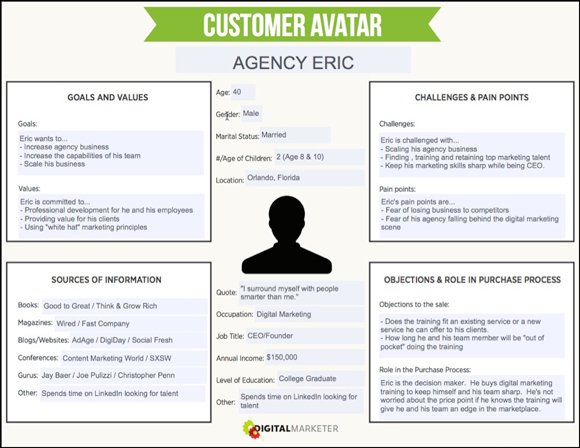Did you know that Google tweaks its SEO algorithm more than 500 times each year? ?
That’s a lot of changes to the SEO algorithm that determines where your page shows up in search results pages.
More than anything, this tells us that SEO isn’t a task that we can check off a list and be done with it. We need to treat SEO as an ongoing marketing strategy and give it regular attention so that we don’t lose valuable traffic whenever Google updates its algorithm.
Does this mean we need to be reviewing the SEO on our entire site, every single day?
No, thankfully. We just need to be more strategic with our SEO article writing and the way we review our content, as we’ll show you.
Throughout this post, we’ll be covering SEO content writing tips, specific ways to write for SEO in 2020 and beyond, as well as best practices for updating outdated SEO. We’ll include information about how often to review different types of content and what to look for to make sure you stay optimized.
First, we’ll take a few minutes to talk about Google’s RankBrain that helps Google sort their search results.
Let’s dive in.
RankBrain
RankBrain is a machine learning system that measures how users interact with Google’s search results and then ranks the results based on those interactions.
For example, let’s say we search for “camper van conversion” in Google:
We like the look of result #4 (the domain alone is enough to make us want to click), so we click on it and love the content. We end up spending quite a bit of time there and RankBrain is going to give that #4 result a rankings boost because of the time we spent on the site (dwell time).
Or, we could have run our search and clicked on result #1 just because it was first and found the content so useless that we left the page within seconds to find something that was actually useful. RankBrain will also notice this and kick that site from the #1 spot if enough users bounce.
RankBrain takes 2 things into consideration when determining where to put your site in the rankings:
- Dwell Time: how long users stay on your page (3+ minutes is a good dwell time)
- Click Through Rate: the percentage of people that click on your result
Now that you understand what Google is looking for, let’s get into how we can give it to them.
Writing for SEO in 2020
Writing for SEO has changed tremendously since 2001 when keyword stuffing was common practice. These days, keyword stuffing is considered a “black hat” SEO tactic you’ll want to avoid if you want to get traffic from Google.
In 2020, there are 4 steps you can follow when writing for SEO that will set you up for search engine success:
- Put together a list of keywords that the page/post is targeting
- Create a list of the intents that drive the searches
- Write keyword-rich headlines and tags
- Draft content then go back and add keywords and related terms
Let’s go through each of these steps in a bit more detail to get a better idea of what actions we can take within each.
Step 1. Put Together a List of Keywords
Search engines are really good at recognizing the content that does the best job of solving users’ problems. Keywords are important for rankings, but solving the user’s problem is what matters.
Content that ranks high for a particular keyword, but that doesn’t solve anything related to that keyword, isn’t going to rank high for long.
Your job is to find the best keywords for each piece of content. You can start with simple brainstorming and then move on to one of the free or paid SEO tools available that will make your SEO content writing so much easier.
Step 2. Create a List of Intents
Once you have your list of keywords from step 1, you will go back through them and determine what the users are trying to accomplish when searching for those keywords.
Let’s look at this list of keywords as an example:
- camper van conversion
- diy camper
- homemade camper van
- how to make a campervan
It’s a pretty safe bet to say that users searching for those keywords are trying to find out how to convert a van into a camper on their own, right?
Step 3. Create Your Page or Post Layout
Once you’ve selected your keywords, take the time to determine where your keywords will fit into your headline and tags. This can be as simple as creating an outline using appropriate keywords as headings.
Using our list of keywords from step 2, we could outline our post like this:
Title: How to Make a Campervan
Heading: Why a DIY Camper?
Heading: Benefits of a Homemade Camper Van
Heading: Camper Van Conversion Tips
You can make sure that search engines are clear on your content’s intent by including keywords in these areas:
- Title
- Internal links
- Alt attributes of images
- Headline tags
- Meta descriptions
Step 4. Draft Content Then Add Related Terms
Once you have your outline you’re ready to draft your content. You should write with your keywords and user intent in mind.
When you’re done writing, go back through your content and add in keywords, related phrases, and topics where they naturally fit into the content.
Top 3 SEO Content Writing Tips
Now that you have a process to follow, let’s get into some tips that will help you write the content that you’ll create through that process.
With our top 3 tips, you’ll be able to drive traffic and increase leads and conversions.
SEO Writing Tip #1. Know Your Audience
Before you create any content you should know which buyer persona you’re trying to reach with that content.
When you know who you’re trying to reach and why you can create better keywords and better content that will solve your readers’ problems.
SEO Writing Tip #2. Write for Humans, not Search Engines
There are 3 things that make your content human-friendly:
- It’s easy to understand
- The content is well-researched
- It’s grammatically and factually correct
Keywords should be added into headings and tags, as well as into content where they naturally fit. You should never sacrifice content to fit in keywords.
SEO Writing Tip #3. Write Educational and Actionable Content
Your content not only needs to capture the attention of readers but also needs to provide them with actionable steps they can take to solve their problems.
You want your readers to see that your content is original and well-researched so they will return to your site time and again for trusted content.
Check out our content marketing guide for more!
Updating Outdated SEO
Fortunately, the most complicated part of updating outdated SEO is knowing how often to do it. In this section, we’re going to cover best practices for updating outdated SEO for on-page content.
Keywords
You’ll want to make sure that you’re ranking well for keywords that are being searched and with the right intent.
Metrics to Watch
- Average Monthly Searches
- Average Search Volume
When you start seeing a decrease in these metrics it’s time to start playing around with your keyword strategy.
How Often
- Quarterly
- 3-6 months before launching a new campaign or promotion
On Page Content
Make sure that title tags and meta descriptions contain your target keywords.
Metrics to Watch
Adjust your title tags and meta descriptions as rankings change.
How Often
Update these areas with changes to your keyword strategy and when you hear about changes to Google’s algorithm that could impact these areas.
Refresh Content
Review your old content to make sure that it’s still performing well.
Metrics to Watch
- Visitors to Page
When activity on your content slows considerably there are a few things you may want to consider:
- Update title tag or metadata
- Promote on social media
- Link it in new content
- Rewrite
How Often
Track weekly, but maybe give 3 months before deciding to refresh or not.
There you have it! A massive list of tips for SEO content writing in 2020. Want to learn more about SEO? Check out our ultimate SEO guide.
Interested in SEO for lead generation? We’ve got you covered on that too.
Speaking of lead generation… Did you know that OptinMonster is the best lead generation software for marketers? Join us today!

















Add a Comment